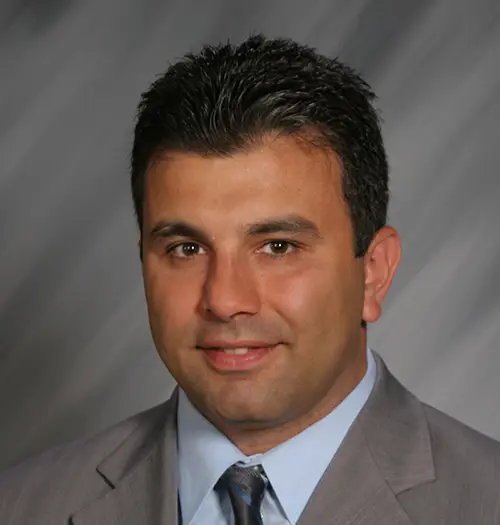Understanding Oxygen Therapy
When Oxygen Therapy is Necessary to Treat COPD
Chronic Obstructive Pulmonary Disease (COPD) is a lung disease that makes breathing difficult. As the disease progresses, the lungs lose their ability to efficiently exchange oxygen and carbon dioxide. This can lead to low oxygen levels in the bloodstream. For many people with COPD, oxygen therapy becomes an essential part of managing the condition. But the question often arises: When is oxygen therapy needed?
Understanding COPD and Oxygen Levels
COPD limits airflow and reduces the amount of oxygen that your lungs can transfer to the blood. When oxygen levels fall below a certain point, it can cause several concerns, including fatigue, confusion and dizziness. It can cause even organ damage in extreme cases. The body’s inability to function this way creates low oxygen levels, also known as hypoxemia. This means the body isn’t getting enough oxygen to function properly. This is where oxygen therapy comes in.
Oxygen therapy is prescribed to raise the amount of oxygen in the blood, ensuring organs and tissues receive the oxygen they need to function properly. However, not everyone with COPD requires oxygen therapy, and it is typically reserved for moderate to severe cases.
Signs You Might Need Oxygen for COPD
A doctor may consider oxygen therapy if certain conditions and symptoms present themselves. These symptoms include:
- Low Oxygen Levels
The most common indicator for oxygen therapy is a low blood oxygen level. Doctors measure this using a blood test called arterial blood gas (ABG) or a non-invasive pulse oximeter. Typical oxygen levels are considered as follows:
- Normal oxygen levels: Between 95 and 100 percent
- Mild hypoxemia: 88 to 92 percent oxygen saturation
- Moderate hypoxemia: Below 88 percent
While individual patient conditions might vary, a doctor may prescribe supplemental oxygen if oxygen saturation falls below 88 percent, especially during physical activity or sleep, when oxygen needs may increase.
- Frequent Shortness of Breath
People with COPD often experience shortness of breath (dyspnea). However, R. Jackson Ross, MD, with Hattiesburg Clinic Pulmonary Medicine, noted, “When you notice that you’re frequently short of breath even at rest or while doing minimal activity, it may indicate that your lungs aren’t getting enough oxygen.” In these cases, oxygen therapy can help improve comfort and energy levels.
- Fatigue or Mental Confusion
Low oxygen levels can make you feel tired and mentally foggy. If you are experiencing chronic fatigue, headaches, dizziness or confusion, it may be due to low oxygen levels. Oxygen therapy can help improve energy and cognitive abilities by ensuring the brain and muscles get enough oxygen.
- Cyanosis (Bluish Tinge to Skin)
Cyanosis is a bluish discoloration of the lips, fingers or toes and can be a sign that oxygen levels are dangerously low. This can be life-threatening and should prompt an immediate consultation with a health care provider. “Cyanosis can be a very serious condition very quickly,” added Ross. He said that other symptoms that can accompany cyanosis include difficulty breathing, chest pain, fever, headache, pain or numbness or even dizziness.
When Does Oxygen Therapy Become Necessary?
Doctors do not prescribe oxygen therapy based on COPD diagnosis alone. Walid Younis, MD, also with Hattiesburg Clinic Pulmonary Medicine, explained, “It’s typically only recommended when other treatments (like inhalers, medications and lifestyle changes) aren’t enough to maintain adequate oxygen levels.”
Common scenarios where oxygen is prescribed:
- During Exacerbations: When COPD symptoms flare up due to illness, infections or environmental factors, oxygen levels can drop temporarily. In these cases, short-term oxygen therapy may be required.
- Continuous Oxygen for Advanced COPD: Some patients need oxygen therapy 24/7 due to chronic low oxygen levels, especially in severe stages of COPD. Long-term oxygen therapy has been shown to improve survival rates and quality of life in these cases.
- Nighttime Use: Oxygen levels often drop during sleep, especially for those with coexisting sleep apnea or other conditions that disrupt breathing. Nighttime oxygen therapy can be beneficial in such cases.
- Exercise or Physical Activity: Oxygen may be required during exercise or strenuous activities when oxygen demands increase.
Benefits of Oxygen Therapy
Younis said, “When prescribed properly, oxygen therapy can significantly improve the quality of life for those with COPD.” Here are some key benefits:
- Reduces shortness of breath: Supplemental oxygen can make breathing easier during physical activity or rest.
- Improves mental clarity: Ensuring the brain gets enough oxygen helps reduce cognitive fog and confusion.
- Increases energy levels: Oxygen therapy boosts energy by improving oxygen delivery to muscles and tissues.
- Enhances sleep quality: Nighttime oxygen use can improve sleep, especially if oxygen levels dip during rest.
- Lowers the risk of heart strain: By reducing hypoxemia, oxygen therapy helps protect your heart and other vital organs from damage caused by low oxygen levels.
How Is Oxygen Delivered?
There are several methods for delivering oxygen, including:
- Nasal Cannula: This is the most common method. It consists of two small tubes that sit in your nostrils and provide a continuous flow of oxygen.
- Oxygen Mask: A mask covers the nose and mouth, providing a higher concentration of oxygen.
- Portable Oxygen Concentrators: These lightweight devices allow you to move around while receiving oxygen, making them useful for active individuals.
When Should You Talk to Your Doctor?
If you have COPD and are experiencing symptoms like persistent fatigue, frequent shortness of breath or cyanosis, it is essential to speak with your doctor about your oxygen levels. They will perform tests to assess whether oxygen therapy is needed and tailor the treatment plan to your specific needs.
Oxygen therapy is a powerful tool in managing COPD, but it is not a cure. It can significantly enhance your quality of life by improving oxygen levels, but it must be used correctly and under medical supervision.
If you have concerns about oxygen therapy or wonder if you might need it, schedule an appointment with your health care provider to discuss your symptoms and treatment options.
For more information on COPD treatment options and other services offered by the pulmonary specialists at Hattiesburg Clinic, visit www.hattiesburgclinic.com/pulmonary-medicine.


